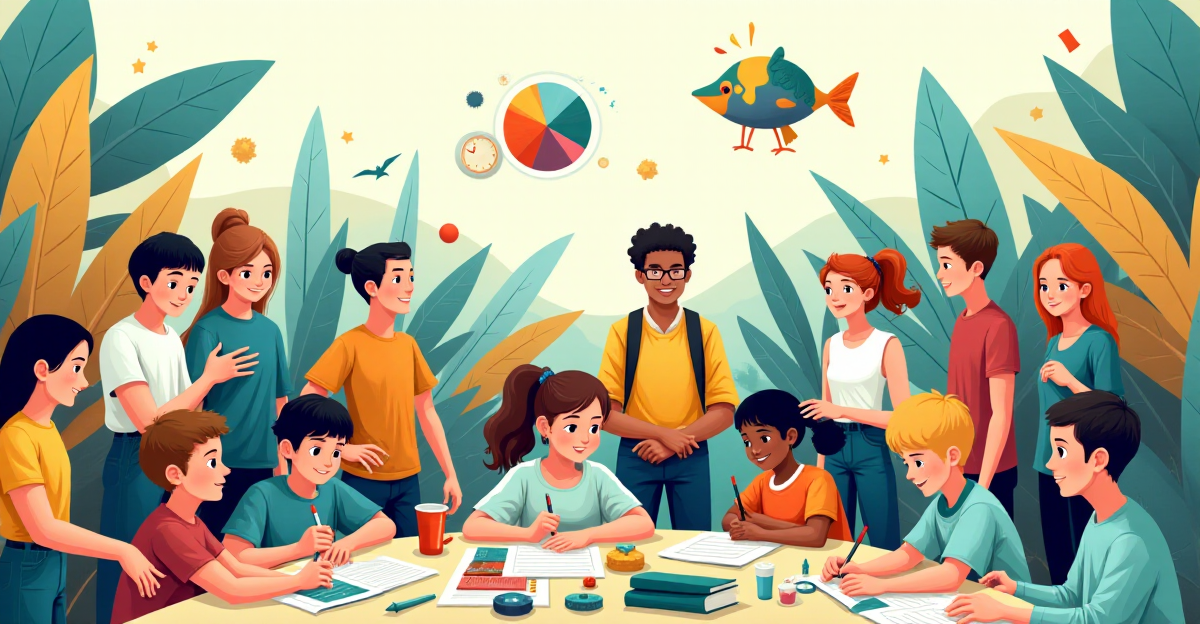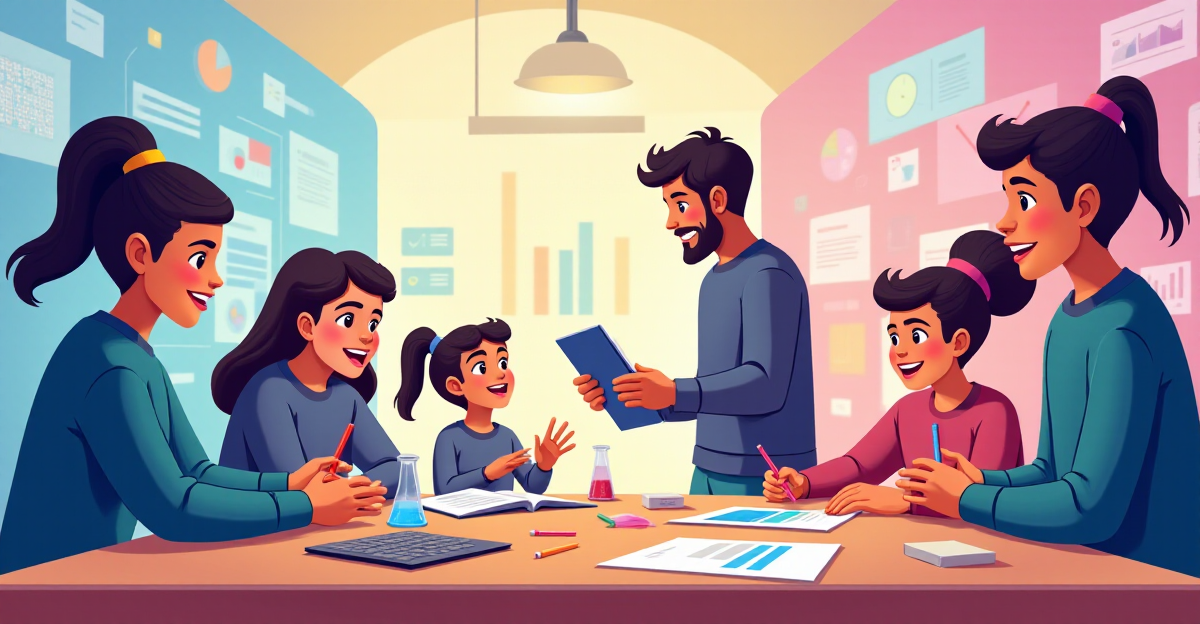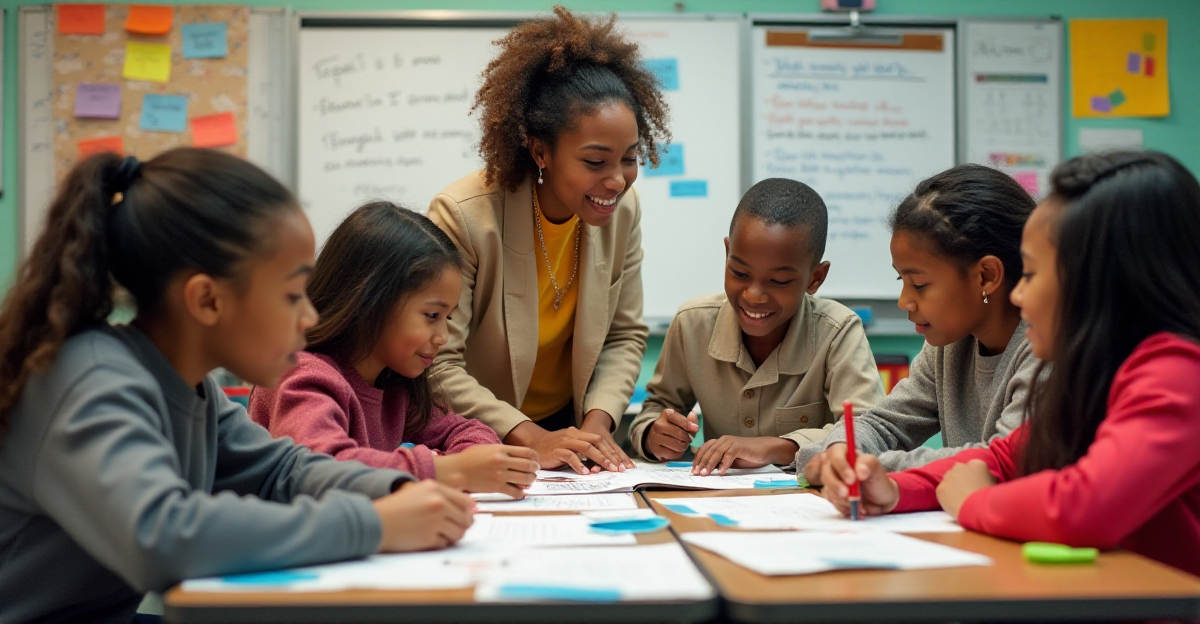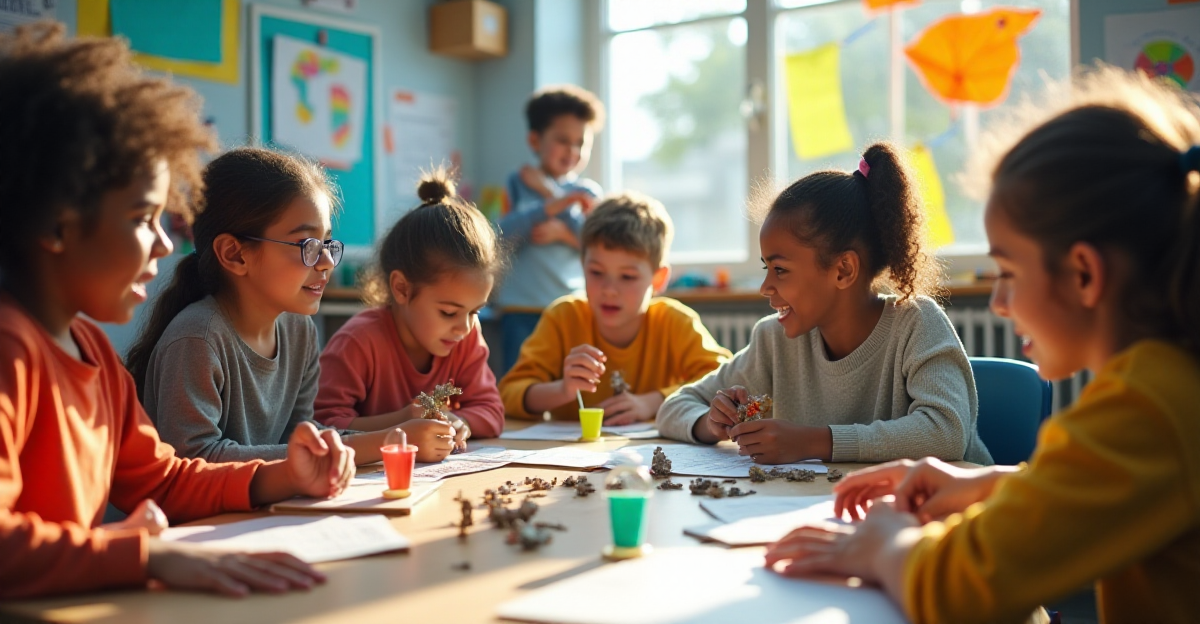Project-based learning (PBL) gives students an opportunity to delve into practical activities that support teamwork and problem-solving by nature. This post will look at how PBL helps students to apply what they learn in practical situations, therefore increasing the relevance and power of their education. Based on my personal teaching experience, I will discuss how PBL may be modified for different disciplines and grade levels. Examining several PBL approaches will help us to find how this method develops critical thinking abilities and motivates innovation. Whether new to PBL or trying to improve your present approaches, this book offers practical ideas to make learning more engaging and relevant for every student.
Table of Contents
- Understanding Project-Based Learning
- Unleashing Student Potential: The Power of Project-Based Learning
- How to Implement PBL in the Classroom
- Extra’s:
Understanding Project-Based Learning

Has somebody ever bored you in class? All of us have been there, glancing at the clock and wondering when the class will lastly stop. On the other hand, if education were practical, interesting, and related to the actual world? One amazing approach to make learning more enjoyable and practical for everyone is project-based learning (PBL!). PBL lets you delve into interesting projects that link to real-life issues and situations, therefore transcending just lecture attendance or memorizing of knowledge.
PBL is about really using what you learn in significant ways, not about cramming facts. Consider yourself learning about ecosystems. Rather than merely reading about rainforests, in class you may create a little model of one! Alternatively, if environmental issues pique your curiosity, you may create a smartphone app to benefit your neighborhood. These are only a handful of the ways PBL could help to make learning alive.
The Power of PBL
PBL pushes you to improve your critical thinking, innovative problem-solving, and clear concept communication. Not only is it about personal effort; PBL promotes collaboration among peers. Consider your teacher as your guide; she will help you investigate, make decisions, and navigate working together. PBL helps you to grow more independent and take responsibility for your educational path.
Look at a few samples. Children might design a small city in primary school to investigate various buildings, modes of transportation, and community responsibilities. Using science, technology, engineering, and mathematics, middle school students may create a functioning robot. In high school, you might even participate in research projects integrating social studies, science, and communication skills looking at local environmental issues. PBL enables you apply your knowledge to practical problems so you could realize how education relates to your life!
PBL goes beyond science or arithmetic as well. It can be included into anything from English to art to history. It can be fit for many years and interests and is versatile. Which kind of hands-on learning project may you find yourself working on?
Unleashing Student Potential: The Power of Project-Based Learning

Have you ever thought about how we may support pupils in being more involved in their education? Many of us have personally gone through the monotony of conventional classes. Everybody has experienced the gulf separating textbooks from practical implementation. But suppose education might be a thrilling trip? Imagine classrooms as dynamic surroundings in which students participate actively in their own learning path. This is where PBL, or project-based learning, finds application. PBL is a creative method that lets pupils take charge of their learning and grow to see the environment around them more deeply.
The Transformative Power of Project-Based Learning
PBL challenges students to participate in practical initiatives linked to real-world events, therefore increasing the relevance and significance of their education. The capacity of PBL to encourage critical thinking skills is among its most important advantages. Imagine being in a school where pupils have to create a sustainable energy solution for their own neighborhood. They have to examine data, investigate several energy sources, weigh environmental impact, and report their results to a panel of professionals if they are to succeed. This approach motivates students to consider ideas closely. They pick up knowledge of problem-solving and wise decision-making.
Let’s meet Sarah, a high school student whose viewpoint on education changed through involvement in a PBL initiative. Under a PBL project, Sarah’s California school let pupils design and create a solar panel system for their building. Researching several solar panel technologies, computing energy demands, and presenting their ideas to the school board, Sarah and her team worked nonstop. Along with teaching Sarah about sustainable energy, this project gave her invaluable practical learning opportunities and problem-solving abilities, therefore empowering her to feel success she had never known before. Sarah’s path demonstrates how PBL could inspire a love of learning and enable pupils to take part in their education actively. More than merely a student engagement tactic, PBL provides a transforming learning experience ready for success in a fast changing environment.
How to Implement PBL in the Classroom

Have you ever considered how your kids might find studying more interesting? One great way to do this is using project-based learning (PBL). It’s all about encouraging critical thinking, teamwork, and creativity by delving into practical issues and scenarios. Using PBL, learning becomes for your students hands-on, pertinent, and fascinating.
Getting Started with PBL
Selecting a topic that will genuinely fascinate your students and pique their attention comes first. It might be anything from historical occurrences to scientific ideas to present social concerns. If you teach middle school science, for example, you might concentrate on a project on alternative energy sources or investigate climate change. Remember, the secret is to choose a subject your pupils will be actually enthusiastic about and interested in.
After deciding on your theme, it’s necessary to list the particular activities your children will engage in as well as the aims and objectives. Make sure the project has well defined expectations. This covers delineating student roles and duties, schedules, and evaluation standards. Remember too that PBL calls for instructor direction and support. To make sure your students remain on target and flourish in this interesting learning environment, be ready to respond to queries, offer comments, and help to organize debates.
Bringing PBL to Life: Real-World Examples
Implementing PBL across several grade levels helps students of all ages to have dynamic and interesting learning experience. Let’s look at some actual instances of how PBL might be applied at certain grade levels.
Elementary School: Designing a Miniature City
We covered urban planning in my primary school classroom using PBL. The project delight the students greatly! We set our classroom as a little city design studio. They looked at several kinds of structures, modes of transportation, and how zoning affected urban design. To further understand about their responsibilities and experiences, we even visited a nearby city planning office on a field trip, where they spoke with actual urban designers.
As the students investigated several architectural forms and thought about environmental considerations for their concepts, their expressions came alive. Working together, they built a vibrant community displaying their inventiveness and ability to solve problems. Showing their little city models to the rest of the school, they discussed their design decisions and difficulties. This practical education enabled them to grasp the complexity of urban design and the need of taking all factors of a society into account.
Middle School: Building a Robot
Through building a working robot, middle school kids can explore the fascinating fields of science, technology, engineering, and mathematics, (STEM). They can investigate several kinds of robots, try coding, and pick knowledge about engineering concepts underlying their development. Imagine the thrill your pupils would have seeing their robot come to life!
This practical knowledge helps them to grasp these topics better and stimulates imagination and ability to solve problems. They will learn to collaborate, conquering obstacles and creating original ideas. This approach will enable kids to develop resilience and confidence.
High School: Addressing Environmental Issues
Research projects on neighborhood environmental issues allow high school pupils to combine social studies, science, and communication skills. Under this initiative, environmental issues in their neighborhood might be investigated, data gathered, conclusions analyzed, and then presented to the local government or educational institution.
Consider how their endeavor might affect their neighborhood! Through working on a PBL project like this, students acquire insightful real-world knowledge and hone their critical thinking and communication abilities. They start taking part in their neighborhood actively and discover the need of attending to environmental issues.
One very successful educational strategy that promotes student involvement, critical thinking, and creativity is PBL. By means of practical learning and real-world applications, students acquire useful skills and knowledge that will serve them all their lives. As you encourage kids to think critically, work creatively, and acquire real-world skills, PBL may find great value in your classroom. I would want you to try running PBL in your classroom. The originality and involvement it inspires in your kids will astound you.
Extra’s:
If you’re eager to explore the fascinating world of cryobiology, where life is put on pause, consider reading our post titled “Life on Pause: Exploring the Wonders of Cryobiology“. It delves into the science behind preserving life at extremely low temperatures, a field with potential applications in medicine and beyond. Furthermore, for a deeper understanding of how to make learning more engaging, “The Power of Active Learning Strategies in Modern Education” provides valuable insights into techniques that promote student participation and critical thinking.
To gain a better understanding of the practical implementation of project-based learning, we recommend checking out “10 Project-Based Learning (PBL) Examples“. These examples offer a variety of project ideas across different subjects, showcasing the versatility of this approach. For those interested in incorporating formative assessment into project-based learning, the article “Formative assessment during project-based learning | Creative Educator” provides a comprehensive guide, highlighting how to effectively monitor and guide student progress throughout the project lifecycle.












1 thought on “Engaging Students Through Project-Based Learning”